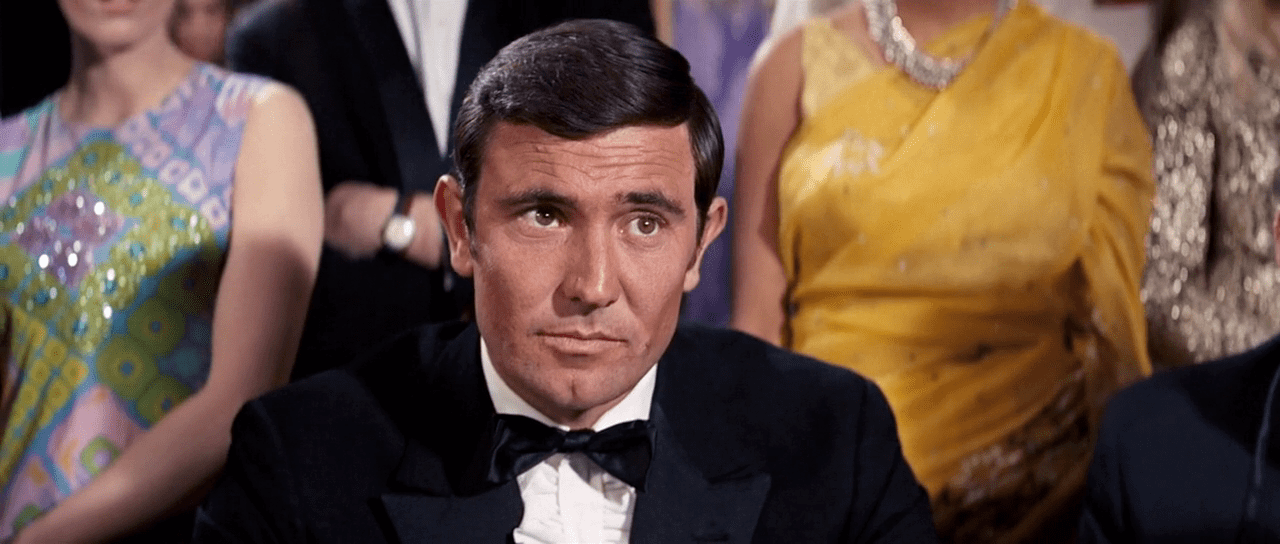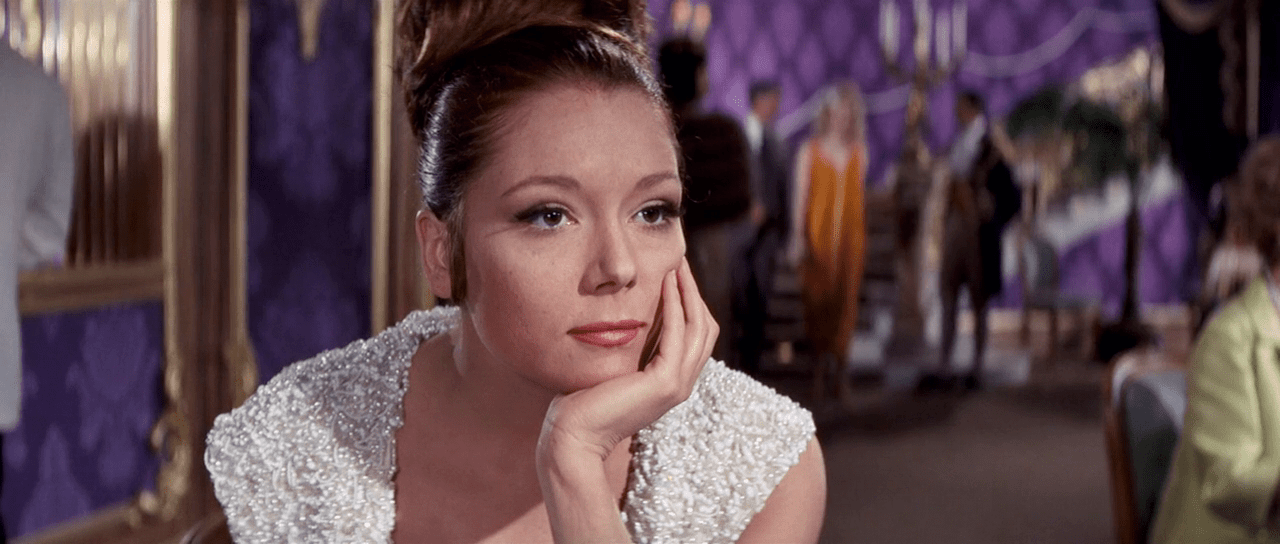Review: "On Her Majesty's Secret Service" is Still Top-Tier 007
Movie of the Week #22 celebrating its 45th anniversary
Welcome to Movie of the Week, a Wednesday column where we take a look back at a classic, obscure, or otherwise interesting movie each and every week for paid subscribers. Follow this link for more details on everything you get subscribing to Fade to Lack!
This week’s piece was originally written in June 2013, but went completely unpublished for 10 years until appearing in my 2023 book 200 Reviews. It is presented here, with additional revisions, online for the very first time, as On Her Majesty’s Secret Service, which originally opened on December 19th, 1969, celebrates its 45th anniversary.
On Her Majesty’s Secret Service represents a major creative leap for the James Bond films, in just about every conceivable way. It is the most faithful adaptation of an Ian Fleming novel in the entire series, and a smarter, more engaging narrative as a result. It tells an actual love story, with three-dimensional characters on both sides of the romance – meaning not only is Bond himself more interesting than ever, but that in Dame Diana Rigg’s Tracy di Vicenzo, we get the first ‘Bond girl’ that is a real character in her own right, and perhaps the single best lead female performance in the series (only Eva Green in Casino Royale would be in that same tier). The film’s set pieces are fewer and further between, but bigger and more spectacular as a result. Even the cinematography, production design, and musical score – the most inarguably accomplished elements of the series in the films up to this point – take a notable leap forward.
In short, On Her Majesty’s Secret Service is a real film, and a great one at that. Not content to be just another sequel (though the Bond films had been doing just fine with those up to now), this is one of the very few installments that unabashedly aims to innovate within the series itself. Creatively, it pays untold dividends. On Her Majesty’s Secret Service is one of the two or three best films in the series. Commercially, it alienated contemporary audiences, led to the lowest box-office returns since Dr. No (though it was not financially unsuccessful by any means), and divided the critical community. As a result, Eon understandably, if disappointingly, set the film aside, went back to comfortable territory with Sean Connery, and preceded to struggle creatively for years to come, until The Spy Who Loved Me found an artistic foothold once more in 1977.
What surprises me about contemporary reaction, looking at the film today, is that while it introduced new elements to the series, and played with existing ones, On Her Majesty’s Secret Service is undoubtedly ‘Bondian’ in tone, style, and execution. With the exception of a happy ending, everything audiences loved about the Bond films is here in force, and delivered, as previously noted, better than ever before. The exotic locales have never been more simultaneously intimidating and inviting – the Swizz Alps are, to me, one of the definitive Bond locations – the villain rarely more intriguing (Telly Savalas’ Blofeld is the best of his many incarnations), and the action never quite as awe-inspiring or thrilling. Special mention must be given to the extraordinary skiing set pieces and stunts which, while oft-repeated in the series, have never once been surpassed (still, if you want to know why every James Bond goes skiing at least once in their tenure after this point, this film is why). Director Peter Hunt, promoted from the editorial position he had maintained since Dr. No, simply understands every intricacy of the Bond style as well or better than any filmmaker that came before him, and executes upon that understanding with absolute confidence. On Her Majesty’s Secret Service plays like a different breed of Bond film, but a Bond film nevertheless – one that is stylish, sexy, surprisingly funny, and endlessly engaging from beginning to end.
Was it George Lazenby that threw audiences for such a loop, then? This is the easiest explanation – Connery was an impossible act to follow, no matter the quality or style of performance – and it is probably true that recasting Bond was a blow no amount of quality filmmaking could make up for in the public eye. But because On Her Majesty’s Secret Service was viewed as a failed experiment at the time, it is easy to overlook George Lazenby even now – a mistake, given what legitimately interesting and often compelling work he does here.
Lazenby is not equal to Connery, nor do I feel he was required to be, especially considering how poorly Connery’s persona would have fit this particular story. On Her Majesty’s Secret Service calls for a sensitive Bond; Connery was many wonderful things, but never truly sensitive, and putting his Bond in this story would have been a hugely different, and likely inferior, experience. Lazenby – who had never acted in a film before, and was best known as a male model in a chocolate commercial – brings new and very different shadings to the character, and is at his best when playing beats Connery was never asked to perform. When it comes to portraying a kind, human, sensitive side to Bond, Lazenby is quite good, and he absolutely has the physicality to sell both the suave sophistication and action heroics. There are occasional hiccups in the script where this Bond is written too closely to Connery’s – particularly when 007 is around the many beautiful women at Blofeld’s compound – and Lazenby’s work is noticeably rougher in those moments. Yet had he been given the chance to develop this persona in future films, with the writing gradually fitting itself to his performance, I believe Lazenby could have been an extremely strong James Bond.
Alas, that never came to pass. But Diana Rigg only needed the one film to establish her character, Tracy di Vicenzo, as one of the great presences in the entire series. At the time, Rigg was just as beautiful as any of the ‘Bond girls’ up to that point, but unlike her predecessors, it is not looks that define Tracy. She is a real character, one the script goes to great efforts to flesh out not only as a living, breathing person, but as a companion Bond would actively, believably want to tie himself to. It is not even an example of going back to the Fleming source material, as Tracy is barely sketched out in the original novel.
No, the success of this character belongs entirely to Rigg and the filmmakers, and their accomplishments have not diminished all these years later. Rigg’s performance is intoxicatingly fascinating, strong, and confident – Lazenby deserves credit for holding his own opposite her – and one of the film’s greatest pleasures is how much time the latter parts of the second act, and entirety of the third, give over to showing how she operates in Bond’s world, making it very easy to understand why James Bond would suddenly convert to monogamy. And when the tragedy strikes, as it inevitably must, it truly, unavoidably hurts, because Bond and Tracy are no mere sex symbols or action heroes, but real people, people we care about, understand, and want to see happy. Not until Casino Royale would Bond’s successes, failures, and heartbreak matter this much to the audience.
It is easy to overlook everything unrelated to Bond and Tracy, given what good work is done there, and the hour or so where Bond investigates Blofeld by entering the villain’s base disguised as a genealogist is, admittedly, the least compelling stretch of the movie. But that is more a testament to the character work than it is to the espionage side, which is extremely well executed. Bond’s exploits posing as Sir Hilary Bray are intellectually engaging, the mystery legitimately intriguing and the general build in tension unmistakably exciting. It all builds rather flawlessly to the explosion of action that occurs once Bond finally escapes, one of the best examples of pacing across the series.
The ski chases that follow are, as previously mentioned, extraordinary, and throughout, Michael Reed’s cinematography is exquisite. This is one of the films from the period that production designer Ken Adam sat out, but the sets are nevertheless visually impressive, if less fantastical than Adam’s designs. Peter Lamont, art director here, would one day take over Adam’s job (Lamont worked on the series all the way up through Casino Royale), and one sees seeds of his future talent for modern, functional design littered throughout the film.
More importantly, John Barry, whose praises can never be sung enough, delivers his best-ever James Bond musical score, one defined by a new James Bond theme (played over the opening credits) that sadly never stuck around for future installments. It is a wonderfully intense and pulse-raising action theme, used to spectacular effect during the set pieces, and the rest of the music is equally effective. The song “All the Time in the World,” written by Barry and sung by Louis Armstrong (it was Armstrong’s final vocal performance), is beautiful, and elements of it are scattered throughout the film to underline the bliss and ultimate tragedy of Bond and Tracy’s love.
It is a magnificent score for a magnificent film, one of the few James Bond pictures that stands on its own as a great work of blockbuster art. The film exists on an island in many ways, as its events would quickly be tossed aside and technical innovations reneged upon in the next three features, but in a sense, I like it that way. On Her Majesty’s Secret Service is a singular high in the James Bond canon, and its uniqueness will always guarantee it a certain ‘special’ status among 007 aficionados.
NEXT WEEK: Wednesday falls on Christmas Day, which means we’ll be taking a look at my favorite Christmas movie ever made: the 1984 version of A CHRISTMAS CAROL starring George C. Scott.
Read the book 200 Reviews by Jonathan R. Lack in Paperback or on Kindle
Subscribe to PURELY ACADEMIC, our monthly variety podcast about movies, video games, TV, and more
Like anime? Listen to the podcast I host with Sean Chapman, JAPANIMATION STATION, where we review all sorts of anime every week. Watch on YouTube or Subscribe wherever you get your podcasts.







